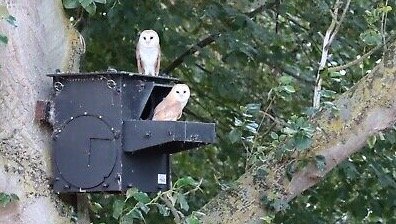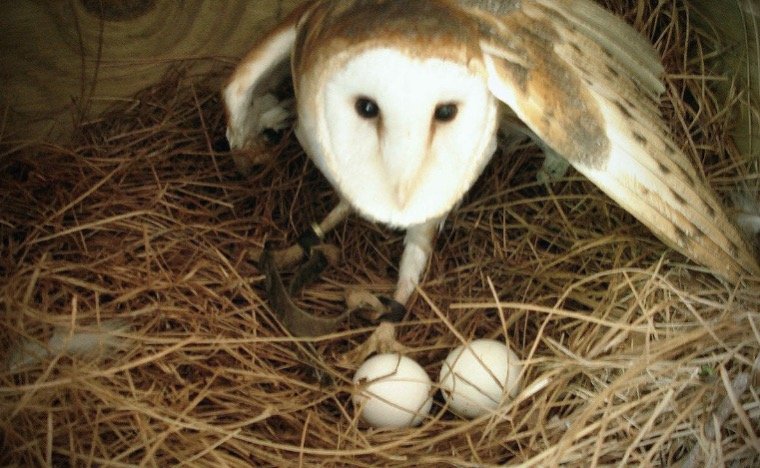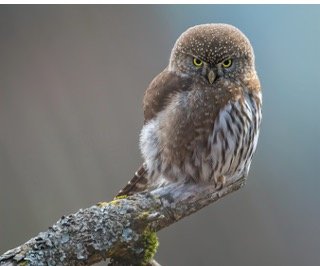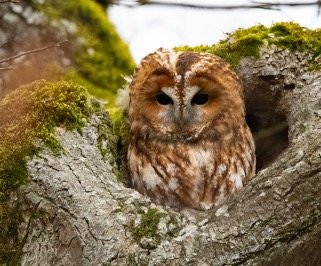
Barn Owl Nest Box
Barn owls are hollow nesting birds of prey, however, they do not dig their own holes. Alternatively, they commonly exploit hollow trees or cavities left by other birds, and they may easily relocate to open structures or nest boxes.
Barn owls might be encouraged towards becoming permanent residents in your backyard or elsewhere on a bigger property with the suitable barn owl box.
How To Encourage Barn Owls To Nest?
Barn owls are welcomed by many farmers and backyard birders because they are effective predators who feed almost entirely on tiny rodents such as mice, voles, rats, shrews, and gophers. With ravenous barn owls and owlets in the region, rodent control will need less money, time, and effort.

Additionally, since these raptors are mostly active at night, they rarely prey on cattle or pets. They will not harm crops or gardens, and they do not necessitate the use of feeders or pricey seed.
Despite being one of the most common owl species, barn owls can be picky about where they nest. Open spaces, such as meadows, marshes, and fields, are ideal.
Barn vs Barred Owl (Key Differences)
Some patchy woodlands are okay, but barn owls normally avoid deep forests, which are favoured by great horned owls, one of their natural predators. Avoid using pesticides to destroy rodent populations to promote barn owls to nest in appropriate settings.

Excessive toxins in rodents can be detrimental to owls, and barn owls would not nest if food is scarce. A barn owl nest box should be at least 15-20 feet high, with the opening protected from the sun and wind. If you install the box on a pole, use a baffle to keep cats, raccoons, and other predators out.
Nesting platforms could also be built in barns, steeples, or silos if the owls can easily access them. Nighttime lighting in the nearby area should be removed or reduced so that the owls really aren’t disturbed and do not feel unsettled.
About Barn Owl Boxes
Barn owls might nest in a variety of box types if the boxes are in the correct area and there is enough prey available. A typical barn owl nest box includes a six-inch entry hole that is large enough for a barn owl but its too tiny for a great horned owl, and the opening should be about four inches above the box’s bottom.
There is no need for a perch, and installing one will just offer predators a foothold. Any safe bird housing, including owl boxes, must have drainage holes. Adult birds may push away undesirable detritus via a short slat along one side of some box designs.
To make cleaning and proper monitoring even easier, the box should include a side or top that can be securely opened. Barn owl nest boxes can have a wide range of interior dimensions.

A barn owl brood may contain 2-18 nestlings, and as the owlets grow, a smaller box can soon become congested, potentially suffocating tiny chicks. In general, an owl box’s floor should be no less than 10×18 inches, while bigger boxes, even loft-like chambers, are popular and just as likely to attract nesting barn owls.
Where To Buy Barn Owl Nest Boxes
Several shops sell barn owl boxes, either as birdhouse kits or as ready-to-use boxes. Price varies from $30 to $500 or more based on the scale and style of the box, with many sellers offering bulk discounts for ordering numerous boxes.
Hungry Owl, Pellet Lab, Best Nest, Barn Owl Box Company, Bird Central, Wild Bird Store Online, and Wild Wing Company are among the retailers that sell barn owl boxes.
Most of the same suppliers now provide box construction designs and instructions to birders who want to build their own boxes. Contact the local Scouting troops, Audubon chapters, and other organisations about the availability of locally-made barn owl boxes in complement to these vendors.
Nest Box Tips
Whenever barn owls settle into their nest box, you must take a few basic procedures to help them feel at home.
1. Don’t really disturb owls that are nesting. Several state and federal laws protect barn owls. Moving, destroying, or disturbing a nest is a severe offence that may result in heavy fines, jail time, and other consequences.
2. Put on earplugs. Barn owls make a lot of noise, and young owls may plead for food all night with loud screeches and other calls. If these nocturnal noises bother you, avoid placing a nest box near a house or window.
3. In the late fall, clean out the box. Barn owls will vomit pellets in the nest box to cushion the young birds, however this material may be removed once the breeding season is through. Cleansing the box would make it more appealing to owl pairings the subsequent year and may reduce the number of insects, rodents, and germs that may be present in future nests.
4. In the late winter, prepare boxes. Barn owls start nesting as earlier as mid-February, as well as all nesting boxes ought to be available for use by the end of the winter. When the young birds having left the nest, the nesting season usually finishes in mid- to late July, and the boxes could be cleansed, renovated, or replaced.
Seeing barn owls nesting may be a pleasant and thrilling experience. Choosing the ideal barn owl box, setting it correctly, and taking modest actions to welcome inhabitants can persuade these ghost owls to consider your land their home.








